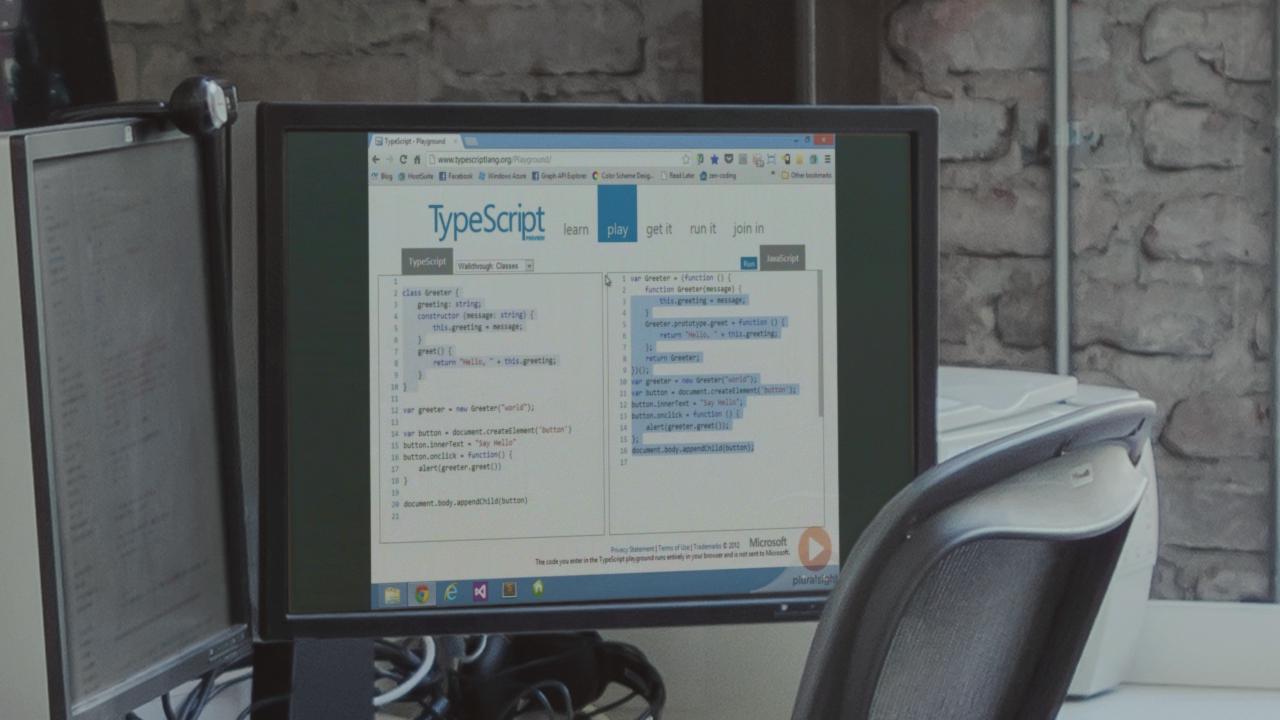- Course
TypeScript Fundamentals
TypeScript Fundamentals walks you through the key concepts and features that you need to know to get started with TypeScript, and use it to build large (and small) scale JavaScript applications. Updated March 25, 2016 for TypeScript 1.8.

- Course
TypeScript Fundamentals
TypeScript Fundamentals walks you through the key concepts and features that you need to know to get started with TypeScript, and use it to build large (and small) scale JavaScript applications. Updated March 25, 2016 for TypeScript 1.8.
Get started today
Access this course and other top-rated tech content with one of our business plans.
Try this course for free
Access this course and other top-rated tech content with one of our individual plans.
This course is included in the libraries shown below:
- Core Tech
What you'll learn
This course has been updated as of March 25, 2016 for TypeScript 1.8. TypeScript is an open source language that provides support for building enterprise scale JavaScript applications. Although several patterns exist that can be used to structure JavaScript, TypeScript provides container functionality that object-oriented developers are familiar with, such as classes and modules. It also supports strongly-typed code to ensure inappropriate values aren't assigned to variables in an application. This course will walk you through the key concepts and features that you need to know to get started with TypeScript, and use it to build enterprise scale JavaScript applications. You'll learn the role that TypeScript plays as well as key features that will help jump-start the learning process.
